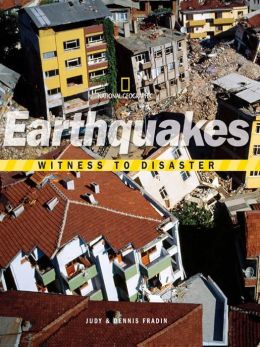
Earthquakes: Witness to Disaster National Geographic 2009
This book opens with a fantastic presentation of the 1964
earthquake and tsunami that features dramatic photos and eyewitness testimony.
These elements are put together in a way that lends a sense of immediacy and
urgency to the narrative.
The following chapter starts with a treatment of early
beliefs about the causes of earthquakes, and then extends into a presentation
of earthquake science.
The next chapter presents famous earthquakes throughout
history.
All of the above is presented in an attractive and
informative format that is accessible and informative. Additionally, on a local
note, you get two eyewitness accounts of the 89 SF earthquake – one from a
driver on the Bay Bridge, and the other from the Goodyear Blimp pilot who was
covering the World Series game at the time of the quake. (p38)
I like this book for the above reasons, and I think it can
be a valuable resource.
However, I must take umbrage with this book on one important
point. There is a chapter titled “Predicting and Preparing
For Earthquakes”. Do notice the word order and
emphasis in this title. It simply overstates, overreaches, and over sells in
its claims.
The fact remains that we can not predict earthquakes.
The chapter starts with detailing cues that can be used to “predict”
earthquakes, and it goes on to state this case in detail for several pages before
getting around to quoting an actual seismologist - “No one knows if we ever
will be able to consistently predict eathquakes.” It is only after this that the book talks
about how to minimize the death and destruction caused by earthquakes. The
quasi-fanciful takes precedence over the concrete and practical in this
chapter.
This is simply shoddy, and indicative of the sensationalism
that often pervades the presentation of scientific topics in books aimed at an
elementary audience. By no means is this type of presentation limited to this
age group or format. A cursory glance at the way science topics are often covered
in the news media will readily confirm this.
We must remain vigilant. National Geographic is a trusted
and venerable source, yet even they are susceptable to emphasizing the
sensational over the scientific. In short, we must evaluate our sources critically,
and not have blind faith in a particular publisher or name.
No comments:
Post a Comment
Note: Only a member of this blog may post a comment.